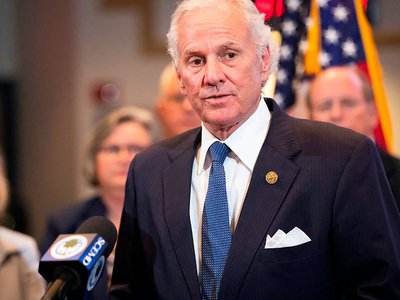A perfect storm of events has the Biden administration’s Customs and Border Protection on its heels in parts of Texas, forcing the agency to begin releasing newly arrived illegal immigrants back into U.S. cities as part of a policy known as "catch and release."
This is the first time since the surge of 2019 that CBP has been compelled to revive the controversial policy.
It raises concerns the Biden administration's softer, more welcoming approach will trigger a wave of migrants from Central America that could overwhelm the agency's limited detention capacity.
This week, President Biden signed immigration-related executive orders, which included revoking then-President Trump’s order ending the so-called "catch and release" policy.
CBP said three factors led to the decision to release illegal immigrant families: an increase of migrant traffic, specifically families from Central America and unaccompanied children; Mexico's refusal to accept additional families with children under age 12 in areas where migrants camps grow increasingly large, overwhelming the shelter and services; and COVID-19, which has severely reduced Border Patrol detention and transport capacity.
This week, the U.S. said it would add 700 beds for unaccompanied minors at a shelter in Carizzo Springs, Texas, along with 500 additional beds at a processing facility in Donna, also in Texas.
Under court order, the Border Patrol is only permitted to hold migrants up to 72 hours. In some areas of Texas, where migrant apprehensions doubled in the last few months, sectors can no longer meet that mandate. Compounding the problem, in some areas, Mexico is refusing to accept more families under Title 42, the pandemic order imposed by Trump to deny entry to any immigrant, including asylum seekers.
"It's a significant development that they're not taking certain family units back under Title 42," said former DHS Secretary Chad Wolf. "That's very concerning, because if you're just doing that in one or two sectors, it's likely going to manifest itself across that border in the very near future."
Wolf and others said smugglers and Central American families will exploit the situation, funneling more migrants into weak areas, causing more releases.
"CBP has seen a steady increase in border encounters since April 2020, which, aggravated by COVID-19 restrictions and social distancing guidelines, has caused some facilities to reach maximum safe holding capacity," according to CBP Public Affairs Officer Rod Kise.
"Per longstanding practice, when long-term holding solutions aren’t possible, some migrants will be processed for removal, provided a Notice to Appear, and released into the U.S. to await a future immigration hearing. As the administration reviews the current immigration process, balancing it against the ongoing pandemic, we will continue to use all current authorities to avoid keeping individuals in a congregate setting for any length of time," Kise said.
The move has raised two concerns. Unlike those arriving at airports from abroad, illegal immigrants do not arrive with a negative COVID test and CBP does not test unless symptoms are obvious. So even though officials know nothing about the migrants' travel or medical history, they're being dropped off at the nearest bus station and could be spreading the virus.
"Federal officers are not doing any COVID testing for immigrants coming across," said McAllen City Manager Roy Rodriguez. "So we actually reached out to the state of Texas, to the governor's office. And they quickly sent us thousands of test kits so that we could supply the charity taking these people in."
Rodriguez said the challenge then becomes transporting and isolating migrant families though the city and partner charities have limited capacity to handle them. His other concern ‒ what if Mexico refuses to accept more migrants denied entry here under Title 42. So far, U.S. officials used Title 42 to deport some 390,000 or 90% of all migrants crossing the U.S. border illegally.
"There's probably thousands of immigrants still waiting to come across right here, six miles from me," said Rodriquez. "Cities like Matamoros have been dealing with that since the policy was to send them back to Mexico. So there may be a new policy moving forward and we've got to deal with whatever that is."
In the last four months, there's been a steady increase in migrant apprehensions from those leaving Honduras, Guatemala and El Salvador. They said poverty there and promises from now President Joe Biden prompted their departure.






